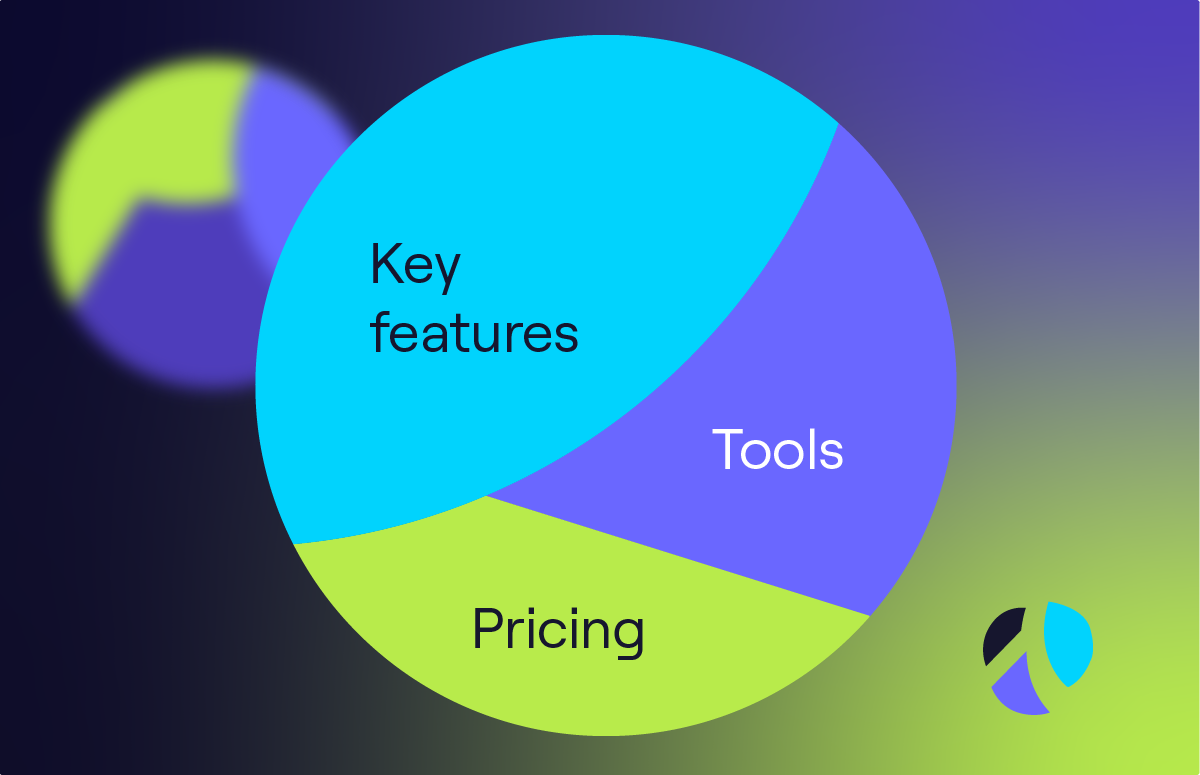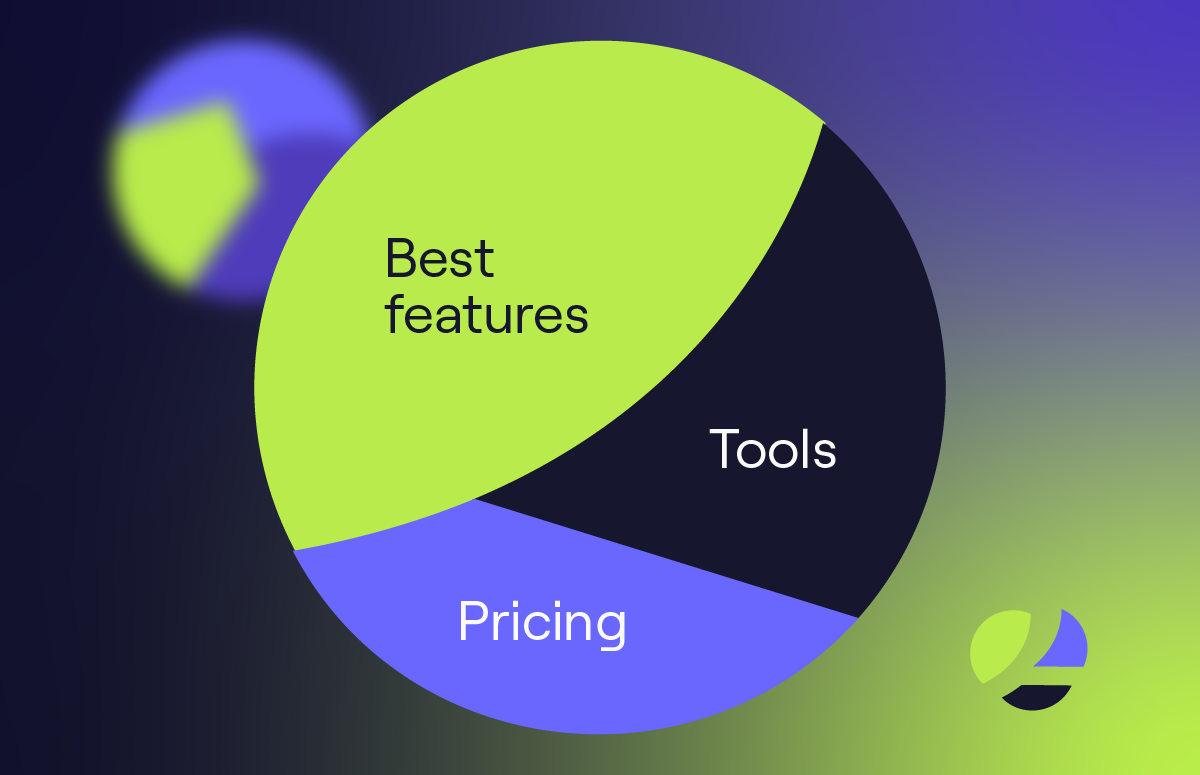How to Close Sales Deals Like a Pro: 8 Tips and Strategies
Closing a sales deal is the ultimate goal of any sales campaign. It’s the stage where a potential customer finally decides to become an actual customer, which is what all salespeople strive for.
However, it’s also the most challenging part of the sales process; many salespeople struggle to successfully close sales deals.
A failed closing attempt can mean the difference between a successful or unsuccessful sales campaign. For this reason, it is crucial to have effective strategies in place to improve your chances of closing sales deals.
Let’s look at some of the best tried-and-tested strategies to help you close sales deals and increase your success rate.
Keep scrolling! 👇
1. Build strong rapport
Before diving into the negotiation stage, it’s crucial to establish a strong rapport with your potential client. Invest time in understanding their needs, challenges, aspirations and pain points.
Actively listen and engage in meaningful conversations that show you genuinely care about their success. Building rapport helps establish trust and credibility, making it easier to navigate the closing process.
To build rapport with your customers as a part of closing sales, you must treat clients like people rather than just sales opportunities.
Why?
When you take the time to get to know your clients and build a relationship with them, they’ll feel like you’re taking care of them; this can lead to better results for both parties.
Aside from being an active listener, providing top-notch service, and delivering on their needs, you can go one step further by providing special discounts, VIP features, and thoughtful gestures.
Consider sending little gifts like branded wholesale frames for their company awards and accomplishments, handwritten notes, or flower delivery to their place of business when they make a big purchase, upgrade, or when you hit a milestone together.
2. Understand the buyer’s perspective and needs
To effectively close a deal, it’s essential to put yourself in your buyer’s shoes. Understand their motivations, concerns, and decision-making process.
By gaining insights into their perspective, you can tailor your approach and offer to address their specific pain points, increasing the likelihood of a successful close. You need a sales goal to aim for, but if it doesn’t tie to a core audience need, you’ll struggle to meet your objectives.
In other words, your prospects don’t have time to mess around. Think about it:
What kind of core need can you help them solve with your solution?
3. Explain your product and showcase value
Throughout the sales process, it’s crucial to highlight your product or service’s unique value proposition. Clearly articulate how your offering solves the customer’s problems or fulfils their needs.
How best to do this?
Use compelling evidence such as case studies, testimonials, or demos to demonstrate the tangible benefits they can expect from choosing your solution over others. The stronger the perceived value, the more compelling your proposition becomes.
Motivate your audience to take action by using a loss-aversion messaging style in your sales copy; this highlights the potential losses they can avoid by using your tool.
Closing sales deals largely depends on the quality of your message. Follow simple writing tips to ensure your message resonates with your audience.
For example:
If you own an HR platform and many of your customers struggle with high labour costs, then you might write loss-aversion sales copy that reads something like this:
“We’ve helped over 33 agencies save 15-20% on labour costs using our employee cost calculator in the last two weeks. Discover how much money we can help your firm save today.”
See the pain point we’re identifying and the solution we’re providing?
While promising your audience the world may be the first thing you’d want to try, humans are more terrified of failure than they are eager to see success.
In other words, entrepreneurs that run mid-size businesses or enterprises are under tremendous pressure to avoid negative spells that could harm their company’s reputation.
By focusing on how they can avoid losses rather than promising them major business advancements, you can get one step closer to closing your sales deals.
4. Create a sense of urgency
One effective technique to close sales deals is by creating a sense of urgency.
Communicate to the prospect that delaying a decision may result in missed opportunities or increased costs. Highlight limited-time offers, exclusive incentives, or upcoming price changes to encourage prompt action.
For example:
If you’re selling a software solution, let your leads know your SaaS tool uses a secure authentication method such as JWT authentication so that they know they’re in safe hands.
Reducing friction as much as possible helps convert more leads into paying customers.
However, be careful not to come across as pushy or manipulative; instead, emphasise the genuine benefits of taking action sooner rather than later. That’s the best way to achieve success in outbound sales.
5. Address objections and concerns
Objections and concerns are natural during the closing phase. Rather than dismissing them, embrace them as an opportunity to better understand the buyer’s hesitations.
The best way to handle objections is to actively listen and provide well-thought-out responses addressing their concerns.
Offer additional information, alternative options, or references to reassure the buyer of your commitment to their satisfaction.
You can also offer to schedule a live demo or Q&A call to help remove barriers. Organise extra tutorials and demonstrations or solidify your tool’s value by creating a comprehensive software comparison chart.
Get inspired by the following comparison chart example from Pumpkin, a solution that offers dog insurance plans:
Another great inspiration for a mini-tutorial is the following illustration on how to sync data from Snowflake to Salesforce:
Handling objections effectively removes barriers and builds trust, bringing you closer to closing the deal.
6. Provide social proof
In a digital age where reviews and recommendations hold significant weight, leveraging social proof can be highly effective in closing deals.
Share success stories and case studies from satisfied customers; they will demonstrate your product or service’s value and positive impact.
Encourage prospects to speak with existing customers or provide them with testimonials. By showcasing the experiences of others, you build credibility and trust, increasing the chances of a successful close.
Pro tip:
Turn your customer success stories into blog articles or have specific articles highlighting your product’s strengths. See the guide below on the best Notion widgets to power up workspaces to see what we mean:
7. Seek win-win solutions
Closing a B2B sales deal should be seen as a win-win situation. Aim for an outcome where both parties feel satisfied and confident in the agreement. Consider the buyer’s needs and expectations while negotiating terms and conditions.
Be flexible and open to compromise, but also know your limits and establish clear boundaries. A fair and mutually beneficial agreement sets a solid foundation for a long-term relationship with your client.
8. Communicate a strong call to action
A well-executed call to action is crucial to closing a deal. Clearly communicate the following steps and the expected timeline.
Admin is very important, too. Promptly send the prospect the necessary paperwork or contracts and offer them support throughout the process.
Demonstrating professionalism and attentiveness instils confidence in the buyer and facilitates a smooth transition from negotiation to implementation. Professionalism also creates strong rapport and helps to grow your network. A satisfied customer will likely refer you to others!
Never underestimate the power of rapport if you want to sell your business. Remember that in B2B, people buy from people.
10 sales closing techniques
To effectively seal the deal, try a range of closing techniques. Here are ten of the most popular and effective 👇
1. Summary close
The summary close involves providing potential customers with a concise overview of your product or service, emphasising its key features and benefits.
This technique reinforces the value proposition and serves as a reminder of the benefits they will receive.
You might want to say:
“With our software, you’ll enjoy a user-friendly interface, advanced analytics, and seamless integration with existing systems.”
2. Assumptive selling close
Assumptive selling is a technique where you approach the prospect as though the deal has already been closed.
When using this technique, it’s crucial to strike a balance and avoid being overly aggressive. Present options and allow the prospect to choose.
With this strategy, you might say something like:
“Which payment plan works best for you, monthly or annually?”
3. Now or never close
Creating a sense of urgency can be a powerful motivator for prospects. Propose time-sensitive offers encouraging immediate action, such as limited-time discounts or exclusive bonuses.
Some of the most popular games for PC use this approach to build hype and drive sales. Hogwarts Legacy, the latest game in the Harry Potter franchise, went entirely out of stock on YUPLAY after a limited-time sale sparked a buying frenzy.
4. Question close
Asking the right questions can help address objections and reassure prospects that your product or service is the right choice for them.
Tailor your questions to focus on their specific concerns and guide them towards a positive decision.
Here you might say:
“If we address your concerns about scalability, would you be ready to move forward with the implementation?”
5. Soft close
A soft close involves using a gentle approach to encourage prospects to take the next step.
Highlight a benefit and conclude with a low-impact question that allows the prospect to decide without feeling pressured.
You might want to say:
“If we could improve your customer satisfaction by streamlining your support process, would you be interested in exploring it further?”
6. Demonstration close
For visually-oriented prospects struggling to fully grasp your product or service, offering a demonstration can be highly effective.
A live sales demo helps them see the value and envision how your solution meets their needs.
In this case, you might say:
“Let me show you how our product can automate your inventory management and save you valuable time.”
7. Sharp angle close
When a prospect asks for a discount or add-on, the sharp angle close allows you to negotiate effectively.
If you agree to their request, ask for something in return, such as an immediate commitment or a longer contract term.
For example, you might say:
“We can offer the discount you requested, but we would need a signed agreement by the end of the week.”
8. 1-2-3 close
The 1-2-3 close highlights the product’s key features and benefits in three sets.
This technique leverages the power of listing items in threes to make a persuasive impact on the prospect.
For example:
“With our solution, you’ll save time, reduce costs, and boost productivity – all in one package.”
9. Weekly cost close
When cost is a primary concern, breaking down the price into smaller, more manageable increments can help put it into perspective.
Compare the cost of your product or service to everyday expenses. Emphasise the value it provides for a minimal investment.
Here you might want to say:
“Our service costs less than a cup of coffee per day, making it an affordable investment for your business.”
10. Testimonial close
Testimonials from satisfied customers can be a powerful tool in closing deals.
With this closing technique, you’ll want to share success stories and positive feedback. These testimonials demonstrate real-world results and show the prospect that you’re a company to be trusted.
For example:
“Here’s a testimonial from one of our clients who experienced a 45% increase in website traffic within a few months using our SEO services. Would you like to achieve similar results?”
Afterwards, hand over the reins to your trusted sales team to conduct outreach calls, schedule demos, and set appointments with prospects to close the sale deal.
Closing sales deals: the last word
And there you have it.
In this article, we covered how to close sales deals in eight steps. Plus, we provided ten closing techniques.
Closing deals is both an art and a science. You’ll increase your success rate by…
- Utilising proven deal-closing techniques.
- Focusing on growing rapport and building relationships.
- Identifying pain points and addressing objections.
- Providing social proof and sharing your company’s successes.
- Creating a sense of urgency and using the right call to action.
Remember, closing deals is not about manipulating or pressuring prospects but understanding their needs, building trust, and delivering value. Develop your skills and adapt to different situations - that’s how you master the art of closing sales!



